Sashiko Pattern Sanjūbishitsunagi
The traditional Japanese pattern sanjūbishitsunagi 三重菱繋ぎ means "three-layered rhombi connection." | Sashiko Pattern
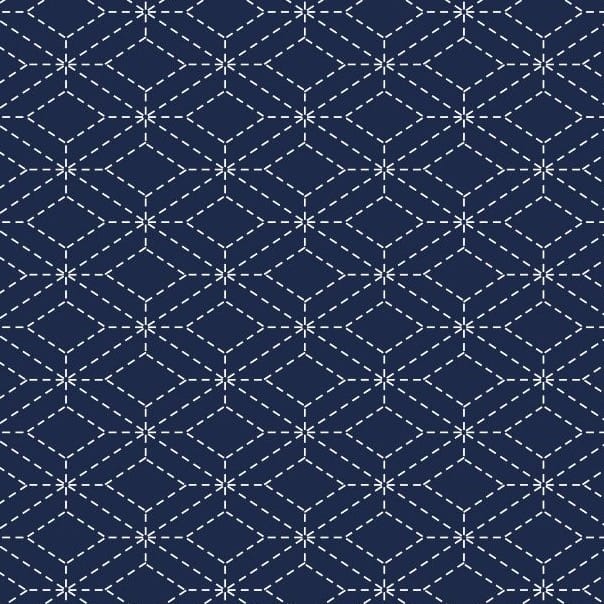
The traditional Japanese sashiko pattern sanjūbishitsunagi 三重菱繋ぎ means "three-layered rhombi connection."
The "rhombus" part of the word actually means "water caltrop."
In old Japan, there was no designated word for "rhombus."
Because the water plant looks like a squished square, and therefore a rhombus, its name is used to refer to the lookalike shape.
This sashiko pattern belongs to the moyōzashi patterns and though it takes a little longer to stitch, it's a pattern that you don't come across very often. For me that means that I don't easily grow tired of it.
And how did the water plant get its name? Because its shape looks squished, the (now old-fashioned) verb hishigu 拉ぐ was used in its continuous form "hishi" to refer to the plant.
This is a little like calling the plant "squishy" and then you call all rhombi squishy instead of giving them a name of their own. Oh, and of course you need to come up with a new complicated letter to refer to the plant: 菱. Source
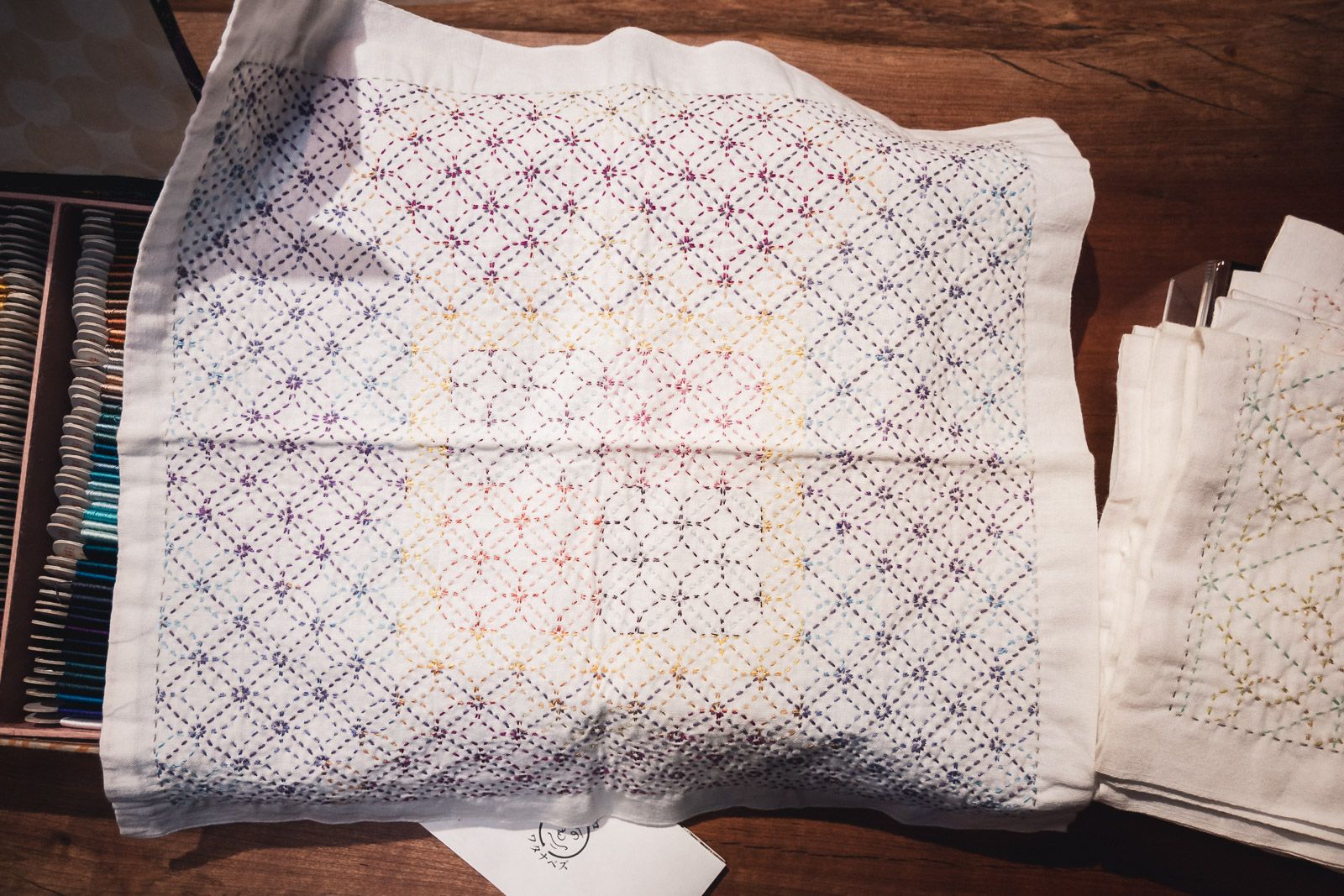
The "bishi" (by itself it is pronounced "hishi, not "bishi") part of the word, which means "water caltrop", is well known through the brand Mitsubishi 三菱 "three rhombi." Or rather: "Three water caltrops."
Meaning of the sashiko pattern sanjūbishitsunagi
The meaning of this pattern is based on the characteristics of the water caltrop. The plant propagates easily and so it stands for plentiful offspring. Furthermore, because the plant is so resistant it also stands for vitality and a strong hold on life. Source
You can find it as a pattern in hotels all across Japan.
Sanjūbishitsunagi stitching directions
First, you stitch the straight diagonal lines. Afterward, you work on the meandering lines crossing over the straight line.
You need two goes in this stage to finish one three-layered part, zig-zagging across the lines you stitched first. Finally, you'll need to switch directions to finish up the remaining diagonal lines.
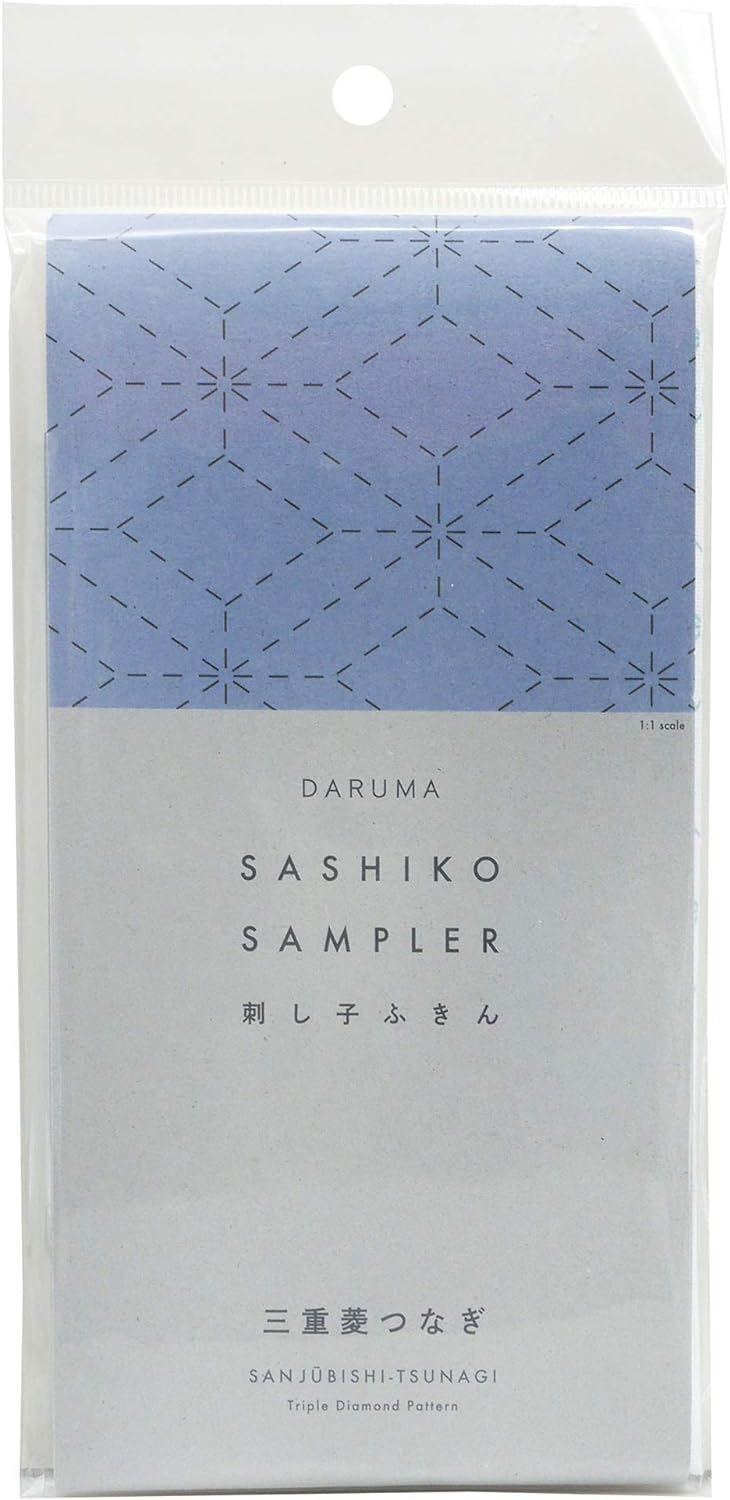
Pre-printed fabric by Daruma
If you want to do sashiko, but you don't want the hassle of drawing the pattern yourself, Daruma offers fabric that has the pattern printed on it. The lines wash out when you've finished stitching. Super easy!
Leave a comment if you are interested in detailed instructions and I will upload more information as soon as possible.


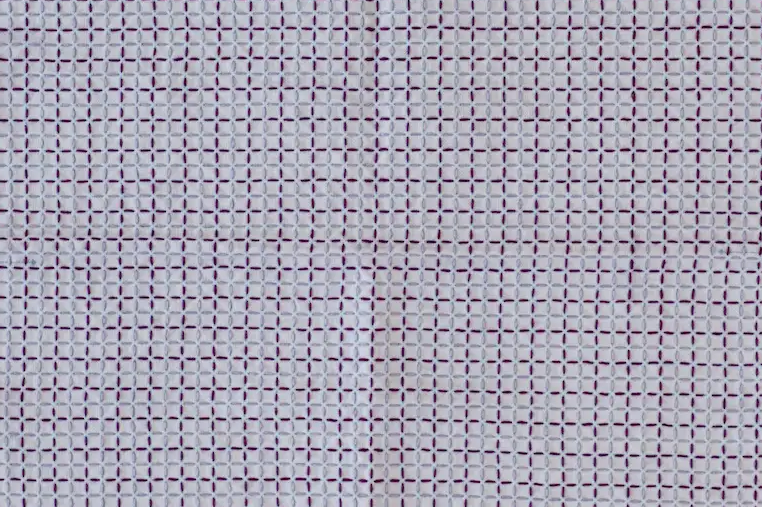
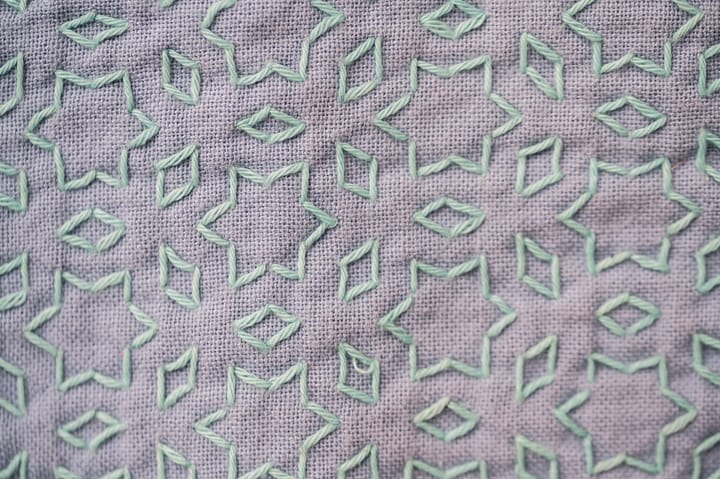
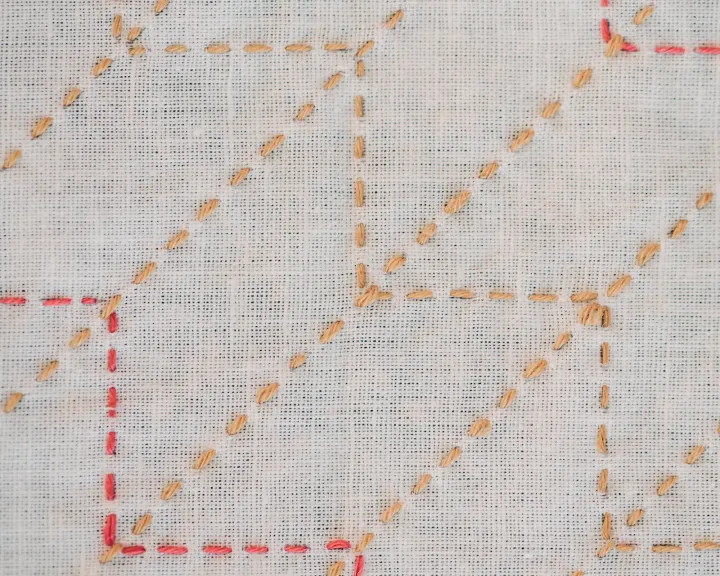
Comments ()